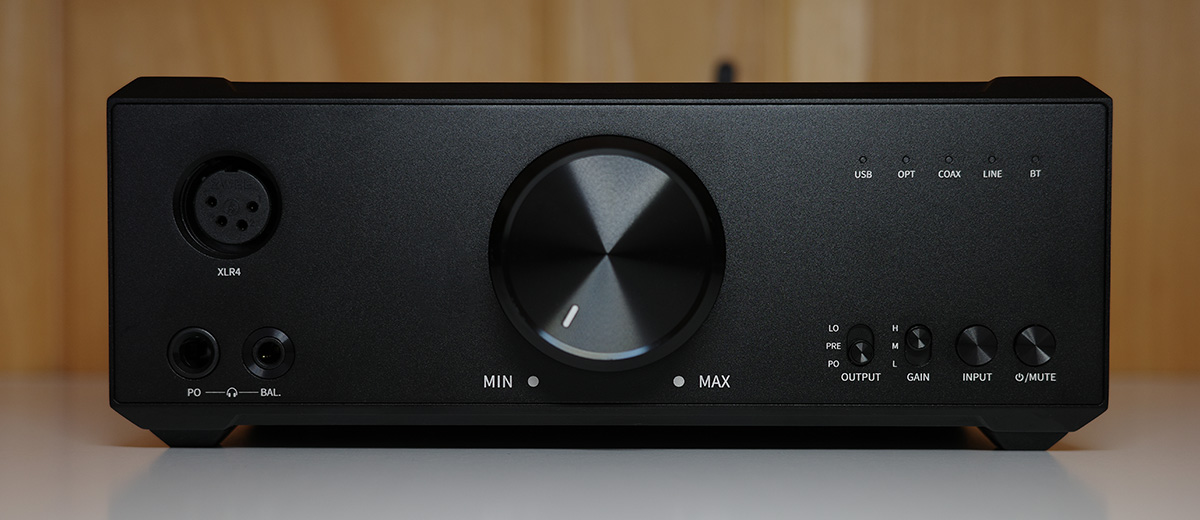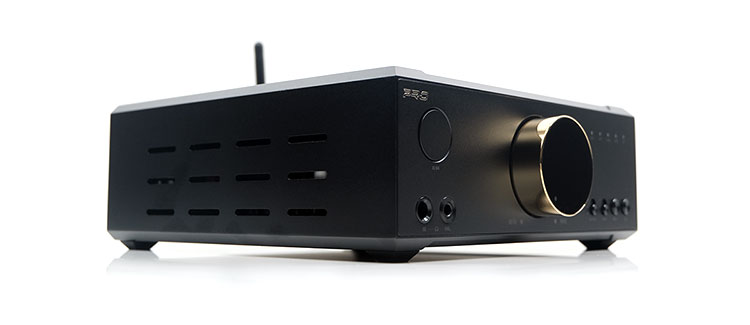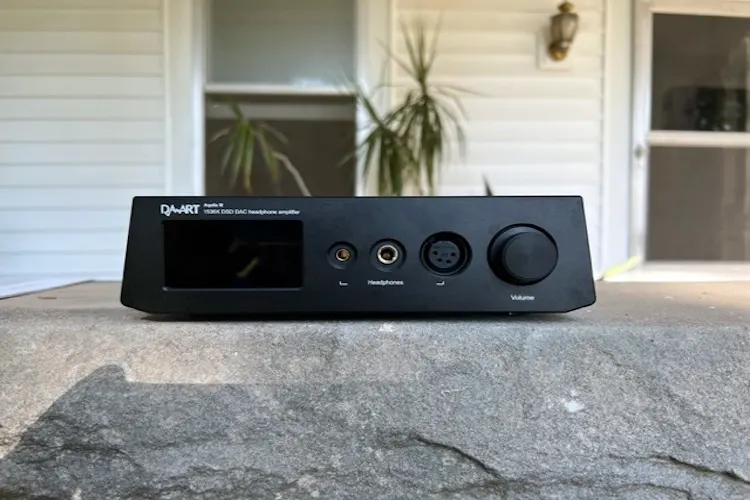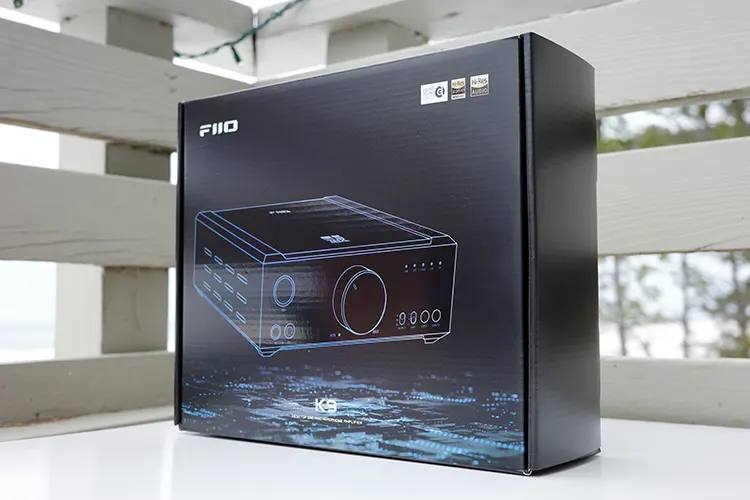Select Comparisons
FiiO K9 Pro ESS
Technical
FiiO swapped out the original single AK4499EQ chipset with a dual-mono ES9038PRO implementation in current mode for the K9 Pro ESS, along with 8 active parallel outputs with a set of 8 TI OPA1612 opamps for I/V and a built-in linear PSU.
The SNR is higher (up to 129dB), and a lower THD+N (<0.0025%) helps make the K9 Pro ESS an excellent performer.
The digital bridge in the K9 Pro ESS is managed via an MQA-capable XMOS XU-208 USB stage with a TI MSP432 microcontroller.
You get up to DSD256 and PCM 32BIT/384kHz decoding, which does fall a bit behind peers such as the YULONG Aquila III’s DSD512 and 768kHz, though.
Running the same BT5.1 capable QC5124 chipset as the K9 AKM also breeds familiarity. Power is a bit higher as well with the same THX788+ amplifier at 2.1W (32Ω).
Design
The K9 Pro ESS is as compact a desktop unit as the K9 AKM, measuring 200 x 224.5 x 72mm and 2.2kg. in other words, the same dimensions and weight.
Design and operation are the same as well along with control and connection layouts. This is the model where FiiO came up with the side-mounted USB-C connection, and I am glad it carried over to the K9 AKM.
Performance
As one might expect, the sound is unlike the K9 AKM, due to the differing DAC chips. Where the AKM is rich and warm, the ESS is detailed and crisp. Clear energy abounds, with very good dynamics which is also punchy and fast responding to the music.
With an excellent, well-defined attack, which is slightly on the dry side, a shorter decay follows; but this is by no means too analytical. I would describe the sound as solid-state vivid with a very good technical ability and performance.
The only issues I had with voltage and current headroom were with the most demanding headphones, such as the AKG 600 ohm; which was also a problem on the AKM. FiiO’s FT3 350Ω had plenty of headroom to exercise its feet and never felt stretched to me.
IEM pairings such as the Spirit Torino IEM Twin Pulse and CFA Supermoon are just as satisfying with the K9 AKM low gain option providing a clean, hiss-free (slight on the Supermoon), black background as well as a smooth non-aggressive level of volume control.
Where the AKM is warmer and richer, the ESS is more detailed and dynamically coherent in presentation.
Audalytic AH90
The Audalytic AH90 mimics the parent company Gustard’s offering in a package, which is smart looking and functionally purposed.
DAC
The Audalytic AH90 uses the AKM AK4499EX DAC and AK4191EQ modulator chipset just like the K9 AKM.
Utilizing a third-generation 16-core XMOS XU316 USB interface, (similar to the FiiO R9 we recently reviewed), the AH90’s USB-C decoding supports high-resolution audio streams of up to PCM 32BIT/768 kHz, native DSD512, and MQA 8x.
The AH90 is also a network streamer, supporting Roon Bridge (based around the Gustarender), UPnP, HQ Player, Spotify, Tidal, and Airplay streaming functions through either the LAN connection or directly from the source connected. More protocols will be added in the future with the brand support.
There are no native apps though and must be used on the source side. Settings can be tuned for the Gustarender using your PC according to reports, (I did not modify the settings at all). There is also no app, unlike the K9 AKM.
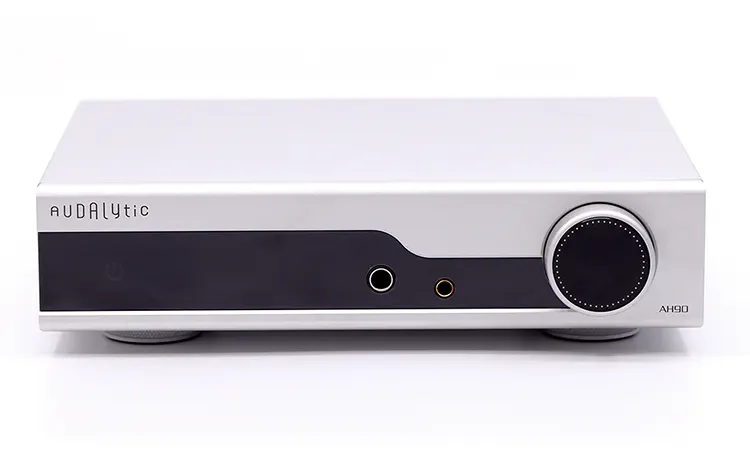
Amplification
The output provides 1W maximum at 32Ω (from 64Ω down) through the balanced connection and 200mW at 300Ω. Not earth-shattering and less than the K9 AKM, but it is adequate for the 4.4mm balanced port.
Power is provided through 2 OPA1612 bipolar-input opamps, using Burr Brown Texas Instrument technology.
With rail-to-rail output swings to within 600 mV on a 2-kΩ load, this increases headroom, while maximizing dynamic range. The typically smooth Burr Brown sound signature pervades the AH90 as a result.
Design
The AH90 comes in either silver or black, with a curved glass insert. To me, the silver shows the shape off better, and it is easier to read the LCD; along with the other functions.
It has a design similar to the Gustard A26 and R26 (curved glass effect) and comes across with a diminutive footprint. The unit measures 220mm x 170mm x 50mm with a minimal 2kg weight.
A large knob dominates the right side of the face, and other than the touch-sensitive on/off “button” that knob controls all features.
The use of the knob was direct and without any faults or construction snafus. The design is elegant and functional yet carries a modern look to it as well.
The AH90 can easily slip under your desktop monitor, or next to your system, minimizing its presence while doing so; but it cannot comfortably be put on its side like the K9 AKM.
Performance
Burr Brown DACs are known for a smooth relaxing signature, and the AH90 is no different. While the sound emanating from within is indeed smooth, there is still plenty of detail wrought from the signal. This is probably the closest of the comparative models to the K9 AKM, sound-wise.
The Audalytic would not be considered a reference sound or full of detail, but neither is it a slouch where clarity and retrieval are concerned. Again, similar to the K9 AKM.
Timbre comes across with a velvet-like smoothness in character and a distinctly warm tone. Burr Browns are typical for this sound, but without losing detail retrieval in the process.
Distinct punctuation of note treatment gives the AH90 a somewhat vibrant character while keeping that smoothness.
While detail does pervade the senses, there is a certain lack of it overall due to the tuning. I was not left wanting for more though, as the overall signature played with that smoothness without losing grip on the intended tonality.
DA-ART YULONG Aquila III
Digital
The Aquila III comes packaged with YULONG’s new 5th-generation Jitter and Interface Control system (JIC).
It also has a proprietary USB interface based on their ARM+FPGA architectures with AK4191+AK4499EX chipset (again, same as the K9 AKM), which enables decoding up to class-leading levels, including PCM1536Khz and DSD 1024 files.
Dual clock modes (labeled Clock-1 and Clock-2) allow for two signatures along with three different filter options (short, sharp, and slow).
Amplification
The Aquila III uses a DC-coupled Class A design that can operate as a preamp or a dedicated headphone amplifier.
Power provides up to 4W (32Ω, balanced) and 1w (32Ω, single-ended). An output impedance of less than 1 ohm makes for a black background. The Aquila III had no issues driving any of the headphones or IEMs used. It easily drove higher impedance headphones when tested.
The stronger pre-out is ideal with items such as powered speakers. Volume is adjustable via both the speaker and the Aquila III when used in this mode.
Design
The combination of isosceles trapezoidal angles has grown on me. I was not a fan initially but having the exposure to two different models with this design, makes me appreciate the lack of a “simple black box.”
With good heft to it, (4 kg), the Aquila III can hold a place on your desk without embarrassment. The vast majority of the display on the front left side features a spectral analyzer.
It has a single-ended dual RCA and a 3-pin XLR (analog) output to the rear along with balanced 4.4mm, 4-pin XLR, and a 6.35mm single-ended output on the front.
Built-in gain control is again left out, leaving you with the détente of a 99-step volume control knob for adjustment, which is not on par with the FiiO.
Four menu options (input, output, filter in use, and clock in use) lie below the analyzer, which can be easily accessed by pushing the volume knob, highlighting the chosen menu.
Performance
Two distinct sound signatures emanate from the Aquila III matching the Clock-1 and Clock-2 modes. Clock preference changed with headphones/IEMs used in my tests.
Clock-1
Aquila III’s Clock-1 promotes a more neutral and natural sound, which is the aim of most DAC/Amps on the market. Coming across with a slight mid-forward push, detail comes across succinctly and with accuracy.
There is a certain amount of reverb associated with Clock-1 as well, which can be discerned in some listening sources better than others. The liveliness of the sound permeates the tonality, making for good accuracy and placement.
Brighter with more detail, Clock-1 represents an accurate response to the source material, whereas Clock-2 adds a touch of warmth.
Clock-2
The Aquila III’s Clock-2 carries good resolution, with more punch down low and up top than Clock-1. Presence provides a thicker sound, with more depth to the notes than Clock-1.
Especially with sensitive IEMs or accurate headphones such as the Meze Audio 99 Classics, but with less authority in the upper mids and treble regions. Somewhat less neutral and natural as a result, which can be attributed to the performance of the AK chipset.
Our Verdict
I enjoyed the performance of the FiiO K9 AKM similar to the K9 Pro ESS though they do sound different. It incorporates a good amount of technological upgrades from the K9 Pro ESS, making for a thoroughly complimentary integrated DAC and headphone amplifier.
Having a choice between the clear, crisp detailed sound of the K9 Pro ESS and the smooth characteristics of the K9 AKM makes for a difficult choice. But a choice, nonetheless. And one which those interested may like to have.
I found the smoother character of the K9 AKM did not dissuade too much from a detailed sound. The richness pervading helped give it a sound, which permeates the senses, evoking memories of a pleasant drive with the top down.
Where an ESS chipped amplifier may be less forgiving in music, the K9 AKM simply plods along with aplomb. Matching the THX788+ and AK4499EX+AK4191EQ chips makes for a very good composition of cooperation.
The succinct nature of the THX amplifier combined with the smooth character of the DAC makes for detail when called upon, and richness when needed. The combination just works together very well.
FiiO K9 AKM Technical Specifications
- DAC: AK4191EQ + AK4499EX
- Decoding chip: XMOS XUF 208
- Amplifier: Two THX AAA 788+
- Bluetooth chip: QCC5124, Bluetooth 5.1 Bluetooth format support: LDAC/aptX Adaptive/aptX HD/aptX/aptX LL/AAC/SBC
- Outputs: 6.35mm/4.4mm/XLR-4/RCA/XLR
- Inputs: USB/OPT/COAX/RCA/4.4mm
- Output power 1: L+R≥2000mW+2000mW (32Ω balanced/THD+N<1%)
- Output power 2: L+R≥780mW+780mW (300Ω balanced/THD+N<1%) SNR: ≥124dB (A-weighted, UAC)
- Noise floor: PO<8μV (A-weighted, UAC); BAL<9.3μV (A-weighted, UAC)
- Output impedance: <1Ω (32Ω load)
- Weight: approx. 2660g
- Dimensions: 200×224.5x72mm (without feet)
- Comprehensive accessories K9*1, mains cable*1, headphone plug adapter*1, USB data cable*1, feet*6, fuse*1, stand*1, quick start guide*1, voltage selection card*1




